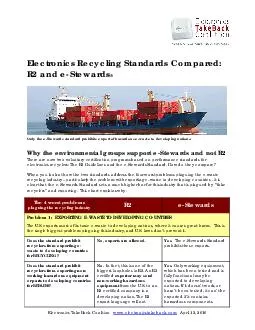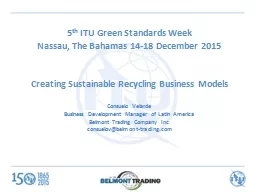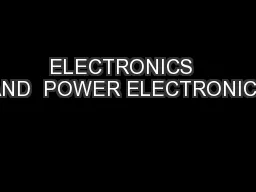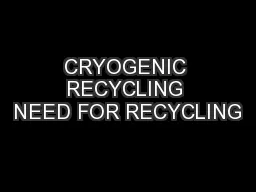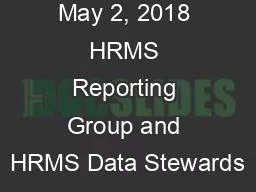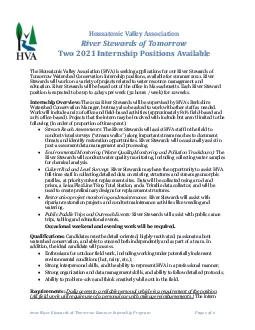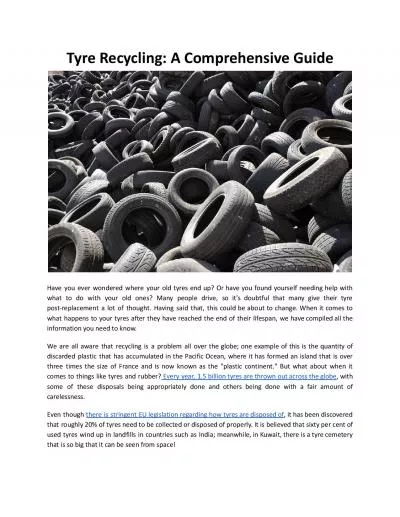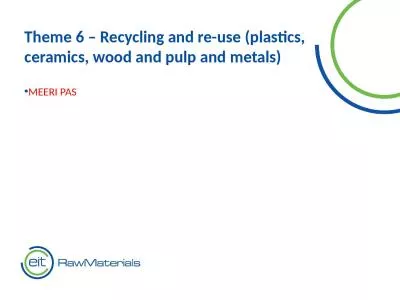PDF-Electronics Recycling Standards Compared: R2 and e-Stewards
Author : olivia-moreira | Published Date : 2016-08-07
Only the eStewards standard prohibits export of hazardous ewaste to developing nations Why the environmental groups support eStewards and not R2 The 4 worst problems
Presentation Embed Code
Download Presentation
Download Presentation The PPT/PDF document "Electronics Recycling Standards Compared..." is the property of its rightful owner. Permission is granted to download and print the materials on this website for personal, non-commercial use only, and to display it on your personal computer provided you do not modify the materials and that you retain all copyright notices contained in the materials. By downloading content from our website, you accept the terms of this agreement.
Electronics Recycling Standards Compared: R2 and e-Stewards: Transcript
Download Rules Of Document
"Electronics Recycling Standards Compared: R2 and e-Stewards"The content belongs to its owner. You may download and print it for personal use, without modification, and keep all copyright notices. By downloading, you agree to these terms.
Related Documents

